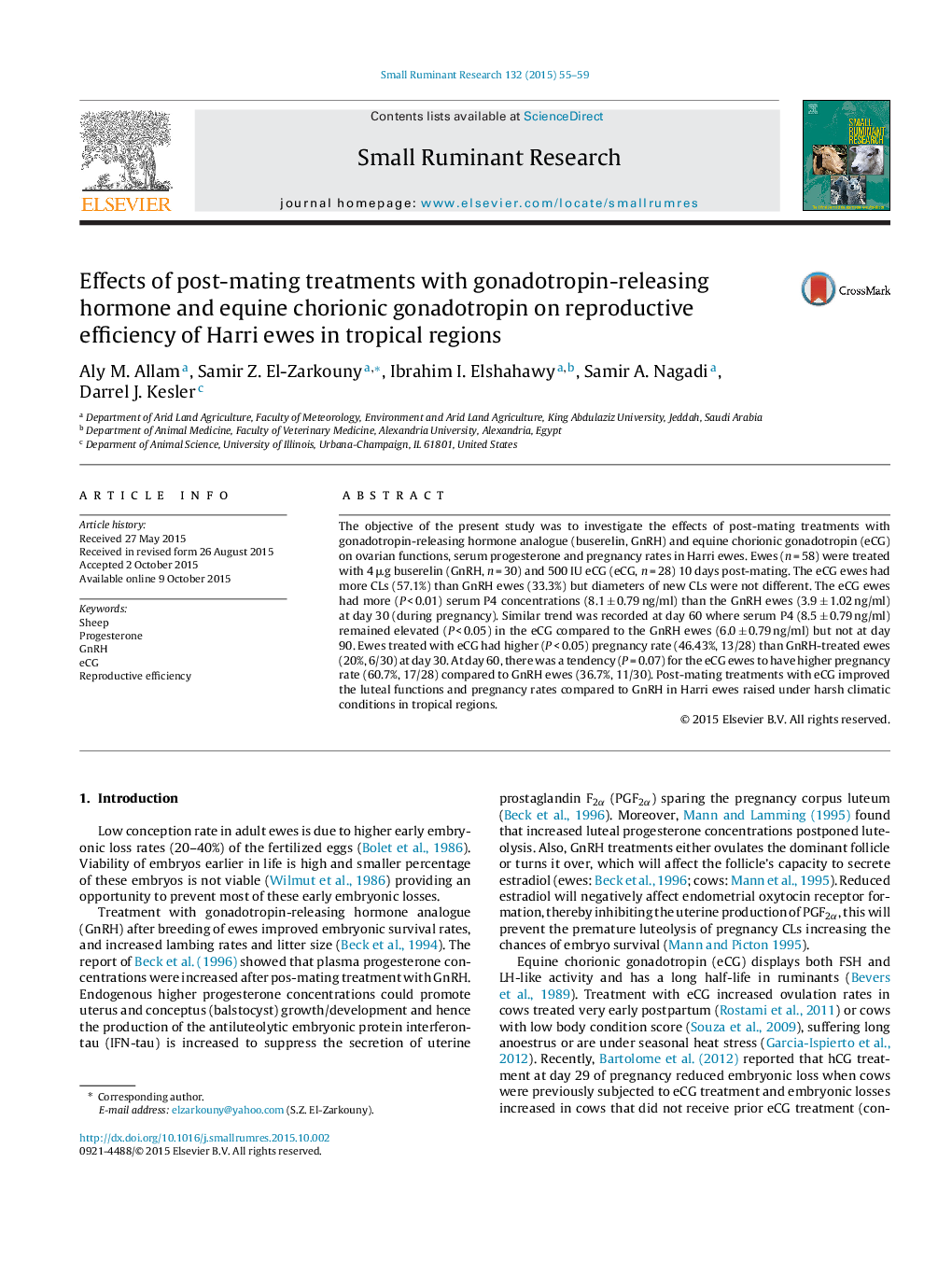| Article ID | Journal | Published Year | Pages | File Type |
|---|---|---|---|---|
| 5795439 | Small Ruminant Research | 2015 | 5 Pages |
â¢GnRH and eCG were given post-insemination to improve fertility and reduce embryo loss in Harri ewes raised under harsh environmental conditions.â¢Post-insemination treatment with eCG improved pregnancy rates compared to GnRH treatment.â¢Luteal function not numbers and circulating concentrations of serum progesterone were increased during pregnancy after eCG treatment.
The objective of the present study was to investigate the effects of post-mating treatments with gonadotropin-releasing hormone analogue (buserelin, GnRH) and equine chorionic gonadotropin (eCG) on ovarian functions, serum progesterone and pregnancy rates in Harri ewes. Ewes (n = 58) were treated with 4 μg buserelin (GnRH, n = 30) and 500 IU eCG (eCG, n = 28) 10 days post-mating. The eCG ewes had more CLs (57.1%) than GnRH ewes (33.3%) but diameters of new CLs were not different. The eCG ewes had more (P < 0.01) serum P4 concentrations (8.1 ± 0.79 ng/ml) than the GnRH ewes (3.9 ± 1.02 ng/ml) at day 30 (during pregnancy). Similar trend was recorded at day 60 where serum P4 (8.5 ± 0.79 ng/ml) remained elevated (P < 0.05) in the eCG compared to the GnRH ewes (6.0 ± 0.79 ng/ml) but not at day 90. Ewes treated with eCG had higher (P < 0.05) pregnancy rate (46.43%, 13/28) than GnRH-treated ewes (20%, 6/30) at day 30. At day 60, there was a tendency (P = 0.07) for the eCG ewes to have higher pregnancy rate (60.7%, 17/28) compared to GnRH ewes (36.7%, 11/30). Post-mating treatments with eCG improved the luteal functions and pregnancy rates compared to GnRH in Harri ewes raised under harsh climatic conditions in tropical regions.
